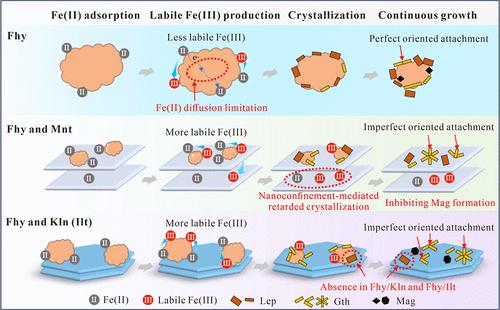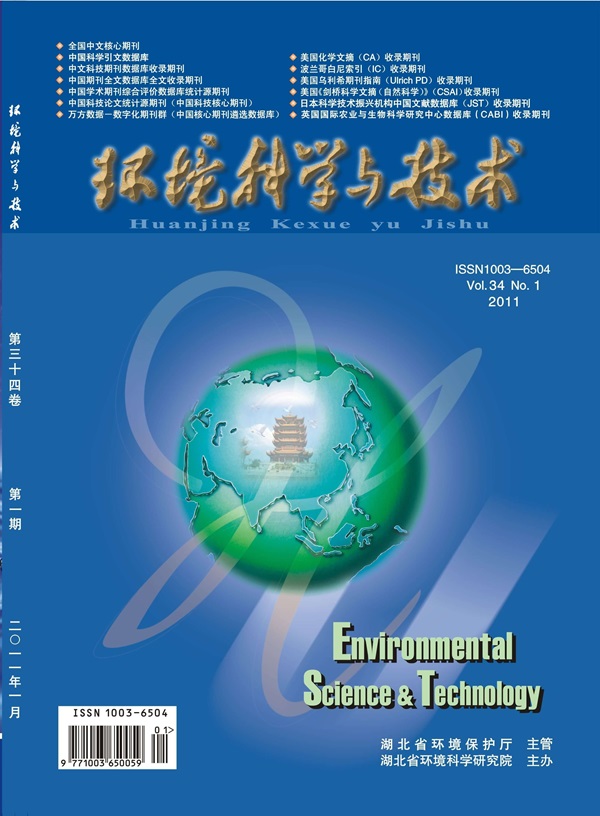Nano-Scale Insights into Clay Minerals Regulating the Fe(II)-Catalyzed Ferrihydrite Transformation under Anoxic Conditions
IF 10.8
1区 环境科学与生态学
Q1 ENGINEERING, ENVIRONMENTAL
引用次数: 0
Abstract
Metastable ferrihydrite nanoparticles and clay minerals always coexist as heteroaggregates in nature due to their abundance, opposite charge, and large interface energy. However, the impact of clay minerals on the transformation of ferrihydrite under anoxic conditions remains elusive. This study systematically investigated the effect of distinct clay minerals on the Fe(II)-catalyzed transformation of ferrihydrite and clarifying the underlying nanoscale mechanisms for the first time. Our results demonstrated that clay minerals could affect the production and recrystallization of labile Fe(III) (an active Fe(III) intermediate species formed by oxidation of Fe(II) at the ferrihydrite surface) by dispersing ferrihydrite aggregates. This modulation led to different transformation rates, higher crystallinity of formed lepidocrocite, and enhanced goethite formation in the heteroaggregates. Importantly, montmorillonite can accommodate Fe(II) and labile Fe(III) within its interlayer spaces, which further led to the inhibited crystallization of Fe(II) to magnetite and long-term preservation of labile Fe(III). Additionally, clay minerals served as templates for forming dendritic goethite and hexagonal magnetite nanoplates. Our findings provide new insights into the complicated roles of clay minerals in controlling the ferrihydrite transformation and other iron (oxyhydr)oxides formation, which is significant for predicting the bioavailability of iron and the fate of other coexisting contaminants.

求助全文
约1分钟内获得全文
求助全文
来源期刊

环境科学与技术
环境科学-工程:环境
CiteScore
17.50
自引率
9.60%
发文量
12359
审稿时长
2.8 months
期刊介绍:
Environmental Science & Technology (ES&T) is a co-sponsored academic and technical magazine by the Hubei Provincial Environmental Protection Bureau and the Hubei Provincial Academy of Environmental Sciences.
Environmental Science & Technology (ES&T) holds the status of Chinese core journals, scientific papers source journals of China, Chinese Science Citation Database source journals, and Chinese Academic Journal Comprehensive Evaluation Database source journals. This publication focuses on the academic field of environmental protection, featuring articles related to environmental protection and technical advancements.
 求助内容:
求助内容: 应助结果提醒方式:
应助结果提醒方式:


